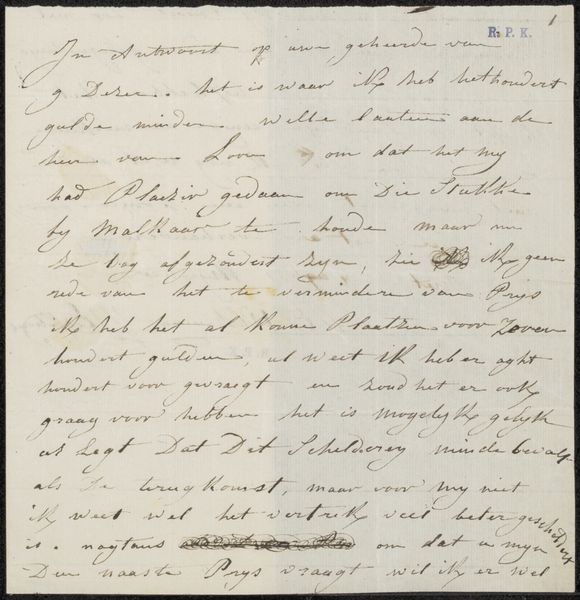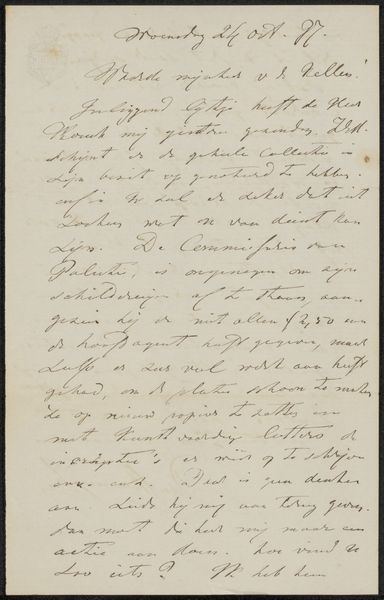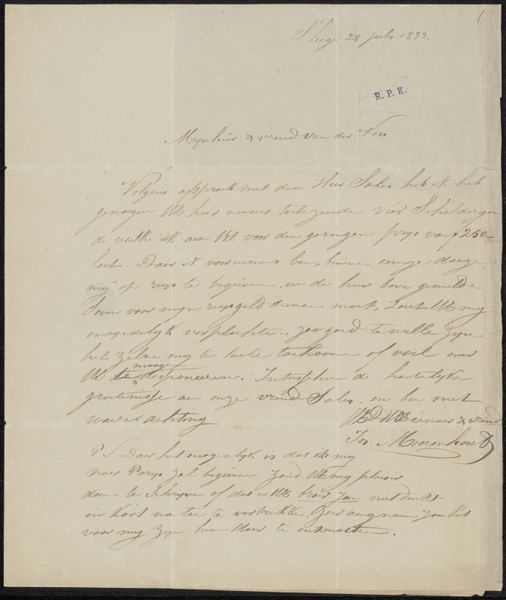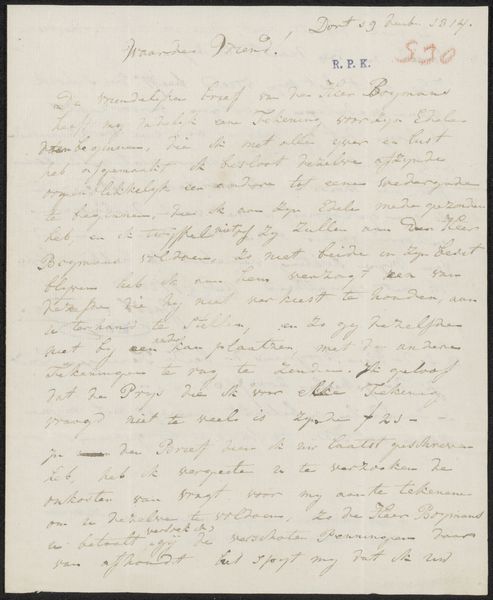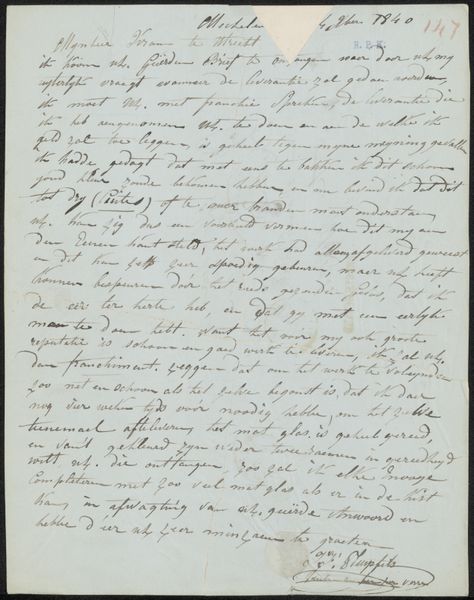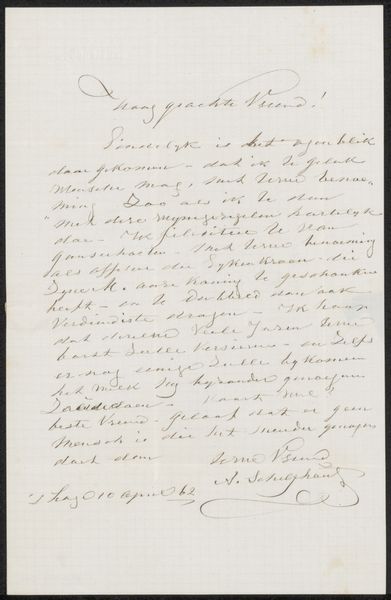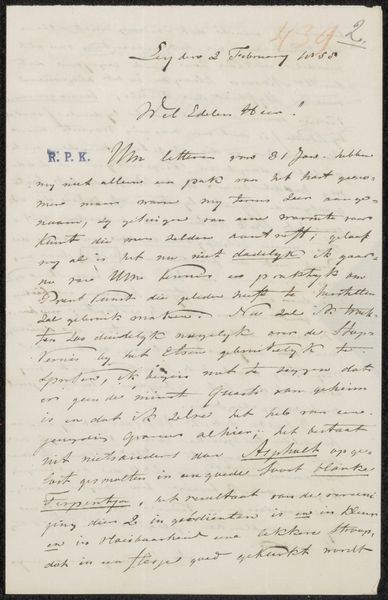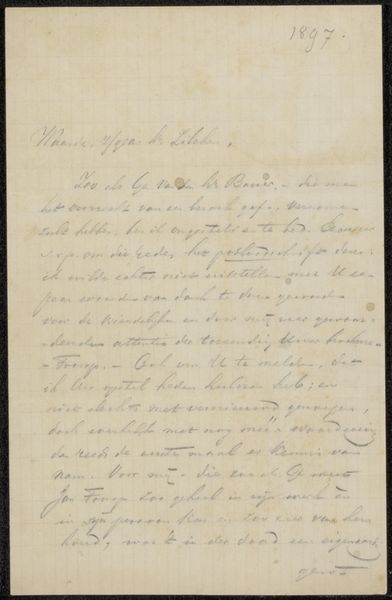
drawing, paper, ink, pen
#
portrait
#
drawing
#
paper
#
ink
#
pen
Copyright: Rijks Museum: Open Domain
Curator: This is a fascinating artifact titled "Brief aan Christiaan Immerzeel," potentially dating back to 1856, housed in the Rijksmuseum. The artwork is a drawing executed with pen and ink on paper. Editor: At first glance, the density of the handwriting and the slightly faded ink convey a sense of intimacy, like eavesdropping on a private correspondence. It makes me think about secrecy and hidden messages, just given that the ink looks very pale. Curator: Precisely. The composition directs our eye to follow the handwritten script. Its vertical orientation and careful arrangement across the paper display a level of attention to detail and craft— the hand of a person committed to careful and deliberate communication, that extends beyond the purely semantic meaning of the document. Editor: And that choice to render personal communication as a precious relic really strikes me. This may speak volumes about literacy rates and how unique, and therefore cherished, the exchange of written ideas once was, depending on who had access and who didn’t. How much was it impacted by the accessibility of education to lower socio-economic communities, to women? Curator: Indeed. In purely formal terms, the starkness of the ink against the paper underscores a certain emotional weight. One feels the presence of the writer, even though only his words, converted to inky traces on paper, persist. Editor: I wonder, too, if this letter highlights some colonial dimensions or international trade relations. What systems of exchange supported the delivery of letters? Were they connected with colonialism? Or how would we characterize who gets their correspondence enshrined in a museum, versus whose correspondence has disappeared in the post? It does seem rather like one voice among many gets amplified. Curator: These socio-historical readings definitely offer fresh perspectives, whereas a purely formal consideration reveals how the letter employs simplicity and clarity in the ink work to elevate language, communication itself, to the status of art. Editor: So even though seemingly banal in nature, a closer inspection of such documents is not merely an opportunity for formal appreciation but also for broader engagement with power, communication, and legacy.
Comments
No comments
Be the first to comment and join the conversation on the ultimate creative platform.
